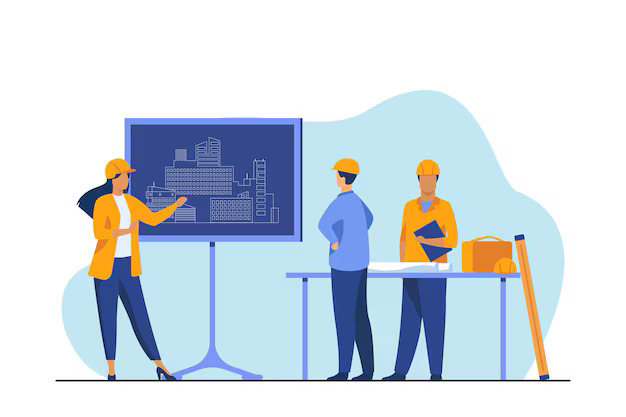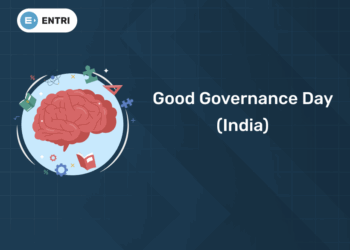Table of Contents
This article discusses about the Renewable Energy Project Ideas for Students. The shift from fossil fuels to sustainable energy sources is making a very remarkable change in the dynamics of the world in terms of climate and other environmental issues, but it is also a challenge for the government and industries to implement.
As the world community grows more aware of the need for climate change and carbon emission, people have begun to understand the value of renewable resources and energy where they have been transforming towards the sustainable way of living. It is also an opportunity for individuals to contribute their part towards a greener planet where each contributor holds a very unique position in the world as an innovator and leader for tomorrow’s drive of change.
Young kids are urged to take part in these energy initiatives since they will give them practical experience with cutting-edge technology and help them comprehend sustainable practices.
We must now develop our sense of environmental stewardship and find answers to these pressing global issues.
Numerous forms of renewable resources have the potential to significantly improve the planet, much as advanced technology or AI-driven energy systems can simultaneously encourage dedication to sustainability and creativity.
Types of Renewable Energy Sources
1. Solar Energy
The sun’s power is the source of solar energy. It uses photovoltaic cells or solar thermal energy that is incorporated into the system to generate power and use it in other ways, such as electricity. It is among the world’s most dependable, easily accessible, and renewable energy sources, making it a perfect place for student projects to start.
2. Wind Energy
Making the most of the vastly abundant resource, wind energy is a sustainable energy source that uses turbines to transform the kinetic energy of the wind into electrical power. Through all of the wind-related projects, students can gain a detailed understanding of aerodynamics and the mechanics involved in the energy conversion process.
3. Energy from Hydroelectric Power
Hydroelectric power makes use of water, a resource that is plentiful for human use. This shows the true potential of water, a very potent energy resource that we can use to our advantage. From tiny streams to massive rivers, everything falls under the hydroelectric system, which uses the flow of water to generate electricity.
4. Geothermal Energy
Geothermal energy uses the heat that is held beneath the earth’s core to generate structures, heat, or electricity. Even if it appears to be a larger endeavor, creative exploration in this field can access a very practical system of making the most use of available resources.
5. Energy from Biomass
The process of turning resources like plant waste, animal dung, and agricultural wastes into biofuels or biogas is known as biomass energy. Although it is a fairly complicated process, students can experiment with turning biomass into biofuels as long as they fully get the idea and receive the right assistance from their facilitators. It is a fantastic method of repurposing the regular household trash that comes from the kitchen into
Benefits of Working on Renewable Energy Projects
1. Hands-on Experience with Sustainable Technologies
Working on projects in students’ life gives them a hands-on introduction to the knowledge that should be taught in schools. These projects give students hands-on experience with cutting-edge technology while also educating them about the technology underlying renewable energy sources.
The goal of the Entri App is to educate students about the world in addition to reading and writing. Students that receive sustainable education develop sustainable attitudes toward the environment since sustainability is integrated into the curricula.
2. Enhancing Problem-Solving and Critical-Thinking Skills
In addition to providing educational opportunities, these projects aid students in developing their skills. As they work on projects like solar panels, wind turbines, and biofuel systems, they learn skills that will help them in the future and more effectively overcome obstacles in the real world. Optimizing energy efficiency and creating affordable solutions to improve experience and advance their analytical and creative thinking may be the true obstacles.
3. Contributing to a Greener Planet
By participating in these initiatives and events, students support the global fight to battle climate change and other ecological issues that the world is now facing, while also learning the value of sustainability and renewable resources. No matter how big or small, every endeavor and every world depends entirely on the energy and resources that are accessible to them. By comprehending the idea of renewable resources, we can protect nonrenewable resources for the benefit of future generations.
Master MEP Design with Industry-Leading Training!
Gain in-depth knowledge of Mechanical, Electrical, and Plumbing (MEP) Design with expert-led courses. Learn HVAC, fire safety, sustainable building strategies, and BIM applications to excel in the construction industry.
Know MoreProject Ideas for Different Education Levels
For Beginners
1. Solar-Powered Phone Chargers
Students are exposed to the world of photovoltaic technology and its significance and value through the creation of a portable charger using solar panels. Through this project, students will also learn about the many practical uses of solar energy in homes.
2. Basic Models of Wind Turbines
Students can show the concept of wind energy conversion and mechanical design in small components by creating a basic wind-determined model. This incorporates a variety of common home items with technology.
Intermediate Projects
1. Building a Miniature Solar Water Heater
Students can learn about heat absorption, insulation, and energy efficiency in an applied way by building a small solar water heater under intermediate projects that uses solar energy and basic household items.
2. DIY Hydroelectric Generator
Students can also participate in the school’s annual science exhibition. This is the most popular activity. In this activity, students build a small hydroelectric generator using water flow from stream tabs and other sources. This enables them to comprehend the idea of energy generation through water flow and current.
Advanced Projects
1. Smart Grid Systems
Students can experiment with smart grid systems under advanced projects. This provide them the opportunity to construct a smart grid that incorporates various energy sources and renewable resources and gives them insights into grade management and energy distribution automation. It is a complicated project with many intricate components that must be skillfully integrated under supervision.
2. AI-Enabled Renewable Energy Systems
Students who are interested in technology might also look into how artificial intelligence is used to optimize the renewable energy system.
An AI algorithm is used to predict future solar and wind energy production based on the weather pattern from the previous day. This is an example of the most recent educational innovation.
Want to get into the MEP Design field? Start your journey with the help of the Entri app!
Conclusion
Projects are much more than just a teaching tool. They give pupils a way to comprehend the importance of a sustainable future.
Students who work on projects learn more about concepts that help them deal with environmental changes and the sustainability and resource consumption challenges facing the planet. At the same time, they develop analytical and problem-solving skills that help them create solutions to these problems.
Along with technical capabilities, students gained critical thinking abilities. This gave them a social obligation to use those abilities to protect the planet’s valuable resources for coming generations.
Potential projects that educate students the importance of renewable energy and change their perception of technology and its applications can span anything, from basic to advanced level design and AI integration.
Students get lifelong learning abilities from this practical experience. This also equips them for employment in other rapidly expanding disciplines like environmental science and sustainable engineering. It also gives them the ability to actively participate in the worldwide transition to renewable energy.
A cleaner and greener world may start with a little step. But over time, these actions set the stage for a more promising and sustainable future that makes the most use of its resources via dedication, creativity, and education.
Master MEP Design with Industry-Leading Training!
Gain in-depth knowledge of Mechanical, Electrical, and Plumbing (MEP) Design with expert-led courses. Learn HVAC, fire safety, sustainable building strategies, and BIM applications to excel in the construction industry.
Know MoreFrequently Asked Questions
What are some renewable energy projects?
| State | Project Name | Potential Output (MW) |
|---|---|---|
| NV | Hot Pot Solar | 350 |
| NV | Iron Point II Solar | 250 |
| NV | Tamarack Solar | 60 |
| NM | Arroyo Solar | 300 |
How do you create a renewable energy project?
- A. Conducting Feasibility Studies.
- B. Conducting Resource Assessments.
- C. Developing a Project Plan.
- D. Establishing Project Goals and Objectives.
- E. Creating a Project Timeline.
- F. Identifying Potential Stakeholders.
- G. Developing a Budget.
- A. Concept Development.












